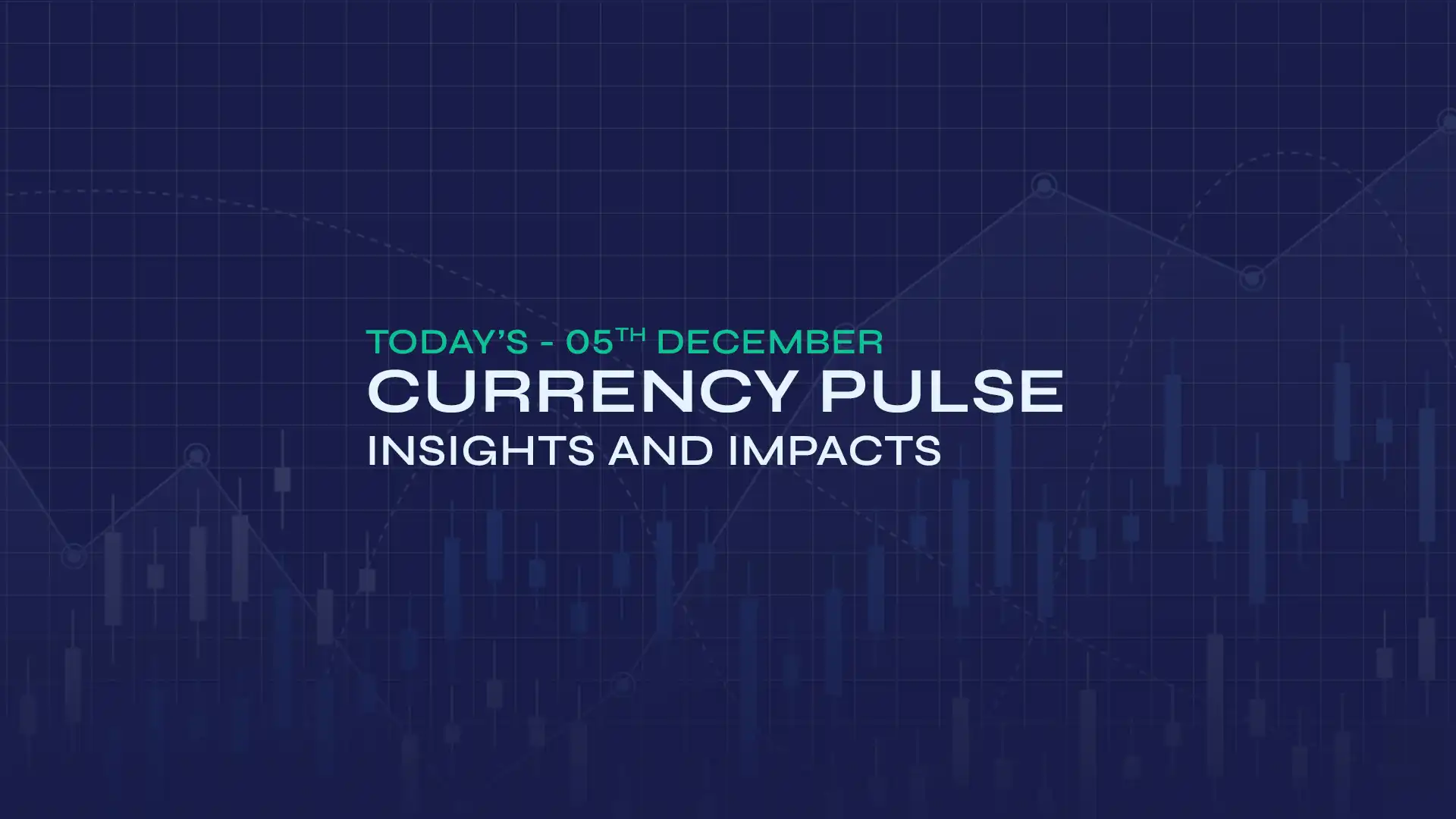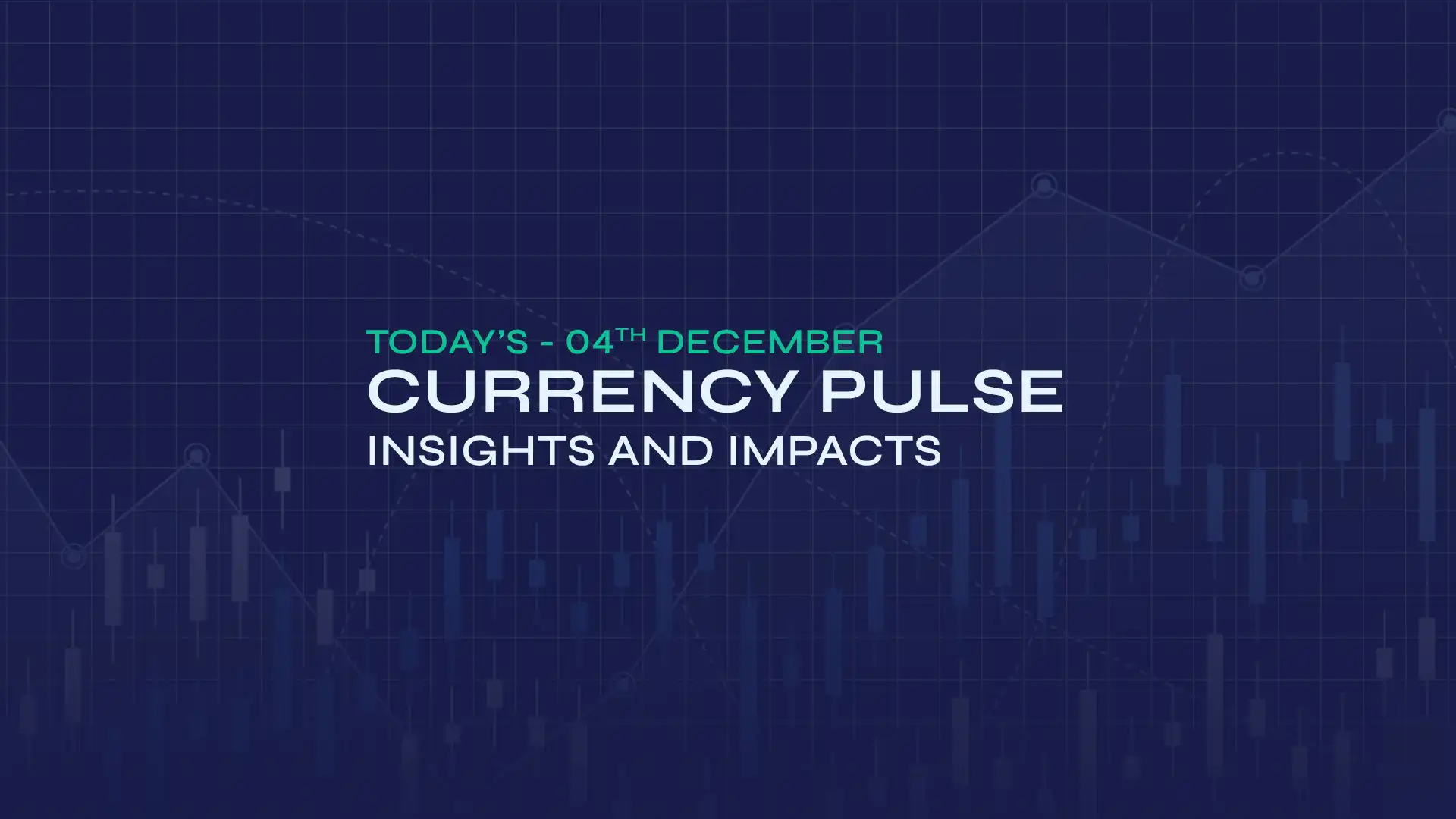GBP/JPY struggled near 198.05, as the pound remains under pressure due to cooling labour market conditions and rising inflationary pressures. This scenario might compel the Bank of England (BoE) to carefully balance its monetary policy in the upcoming announcement next week. The most recent employment data indicates a slowdown in the UK labour market, partly caused by higher employer contributions to social security schemes. In the last Autumn Statement, Chancellor Rachel Reeves increased employers' National Insurance (NI) contributions from 13.8% to 15%. Moreover, the preliminary UK S&P Global Purchasing Managers Index (PMI) for July showed that staffing levels fell at their fastest pace since February. Rising inflationary pressures are beginning to affect household spending power. According to a survey by the Confederation of British Industry (CBI) on Monday, retail sales fell for the tenth consecutive month in July. Nonetheless, the decline was less steep than in June, with data showing a decrease of -34 compared to -46 in June. CBI analysts commented that high price pressures, primarily due to increasing labour costs and ongoing economic uncertainty, continue to suppress household demand, resulting in a decline in sales volumes since October 2024.
On Monday, US President Donald Trump and UK Prime Minister Keir Starmer met at Trump's Scottish golf club in Turnberry. The high-stakes discussion covered trade, the Gaza Strip, and the Ukraine conflict. Trump expressed optimism about UK relations, stating, "We're in great shape with the UK," but quickly shifted to a more hardline stance on broader trade and policy issues. Starmer reportedly asked for relief regarding US steel and aluminium tariffs affecting the UK, but Trump emphasised that the 50% duties remain in place, indicating that the US-UK trade agreement is effectively aligned with the terms of the EU deal.
On the yen's front, a cautious market mood ahead of this week's key central bank event risks, along with uncertainty over trade tariff deals, continues to boost safe-haven flows into the Japanese yen. However, investors remain cautious about making large directional bets and prefer to wait for the Bank of Japan (BoJ) monetary policy update on Thursday. Japan's trade agreement with the US has eliminated a significant downside risk for the domestic economy and suggests that conditions for the BoJ to hike interest rates further may begin to align. Nonetheless, signs of cooling inflation in Japan and domestic political uncertainty could complicate the BoJ's path towards policy normalisation. Additionally, data released on Friday showed that consumer inflation in Tokyo, Japan's capital, decreased more than expected in July. Rising political risks, particularly after the ruling coalition's heavy defeat in the upper house election, could cause the Bank of Japan to delay interest rate hikes and keep the JPY bulls on the defensive. Japan's recent trade agreement with the US, announced last week, has lowered economic uncertainty and increased the likelihood that the BoJ will restart its tightening cycle later this year, potentially giving the JPY a boost.
In the upcoming sessions, Bank of Japan (BoJ) monetary policy and US-China trade negotiations will influence market sentiment around the GBP/JPY exchange rate.
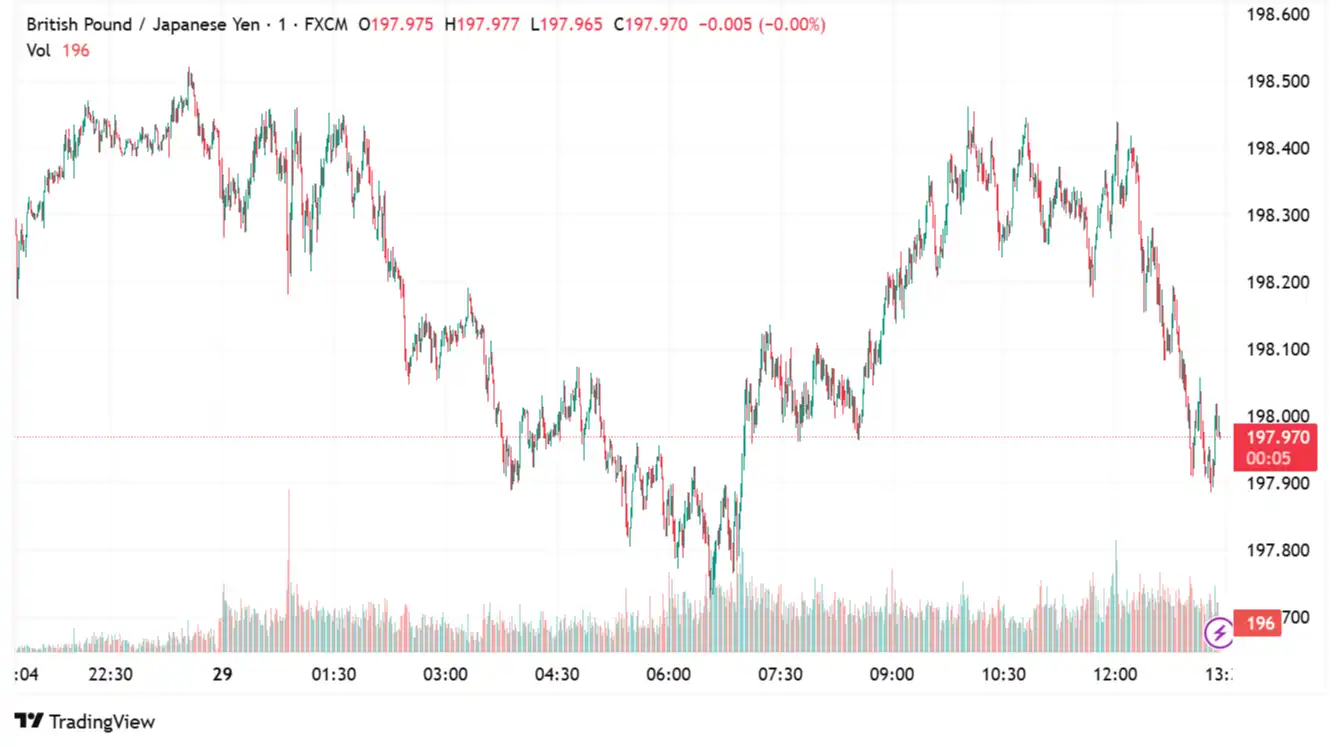
USD/CAD Climbs Amid Uncertainty Over US-Canada Tariff Deal
The USD/CAD pair moved slightly higher, approaching 1.3758, as uncertainty grows around the tariffs between the US and Canada. Canadian Prime Minister Mark Carney told reporters on Monday that a deal without any tariffs at all is unlikely. He noted that negotiations between the two countries are in a tough and complex phase, emphasising, "It's a complex negotiation," and adding, "We will only sign a deal that's the right deal." The US and Canada aim to finalise an agreement by August 1, with US President Donald Trump threatening a 35% tariff on certain Canadian imports. Previously, Trump expressed doubts about reaching a quick agreement, stating last week, "We haven't really had a lot of luck with Canada," and suggesting a tariff might be the main outcome rather than a negotiated deal. Earlier, Canadian Prime Minister Mark Carney said Canada "will not accept a bad deal" or rush into an agreement. The market expects the Bank of Canada to keep its policy rate at 2.75 per cent for the third consecutive decision this week. Persistent inflation and unexpectedly strong labour market data have weakened calls for further easing since the bank's June decision. Statistics Canada reported an unexpected gain of 83,000 jobs in June, which lowered the unemployment rate for the first time since January. A few days later, StatCan indicated that annual inflation rose to 1.9 per cent last month, while the Bank of Canada's core inflation measures remained stubbornly around three per cent. Crude oil prices rose following US President Donald Trump's increased pressure on Moscow and his warning of shortening the 50-day deadline he set for Russian President Vladimir Putin to approve a ceasefire with Ukraine, supporting the commodity-linked loonie.
Regarding the US dollar, concerns that higher tariffs might trigger renewed inflationary pressures later this year suggest that the Federal Reserve (Fed) will likely keep interest rates unchanged at the conclusion of its two-day policy meeting, continuing to influence the USD. Recent strong US macroeconomic data indicated a resilient labour market, and ongoing trade negotiations could shift market sentiment about the dollar. Meanwhile, President Donald Trump issued a new 10- to 12-day deadline for Russia to make progress toward ending the conflict in Ukraine. He warned of severe sanctions if Russia does not act and stated that his administration would impose 100% secondary tariffs on countries that continue to purchase Russian exports.
In the upcoming sessions, investors will pay attention to the FOMC interest rate decisions, Fed Chair Jerome Powell's comments at the post-meeting press conference, and potential developments in the US-Canada tariff deal for fresh insights on the USD/CAD exchange rate.
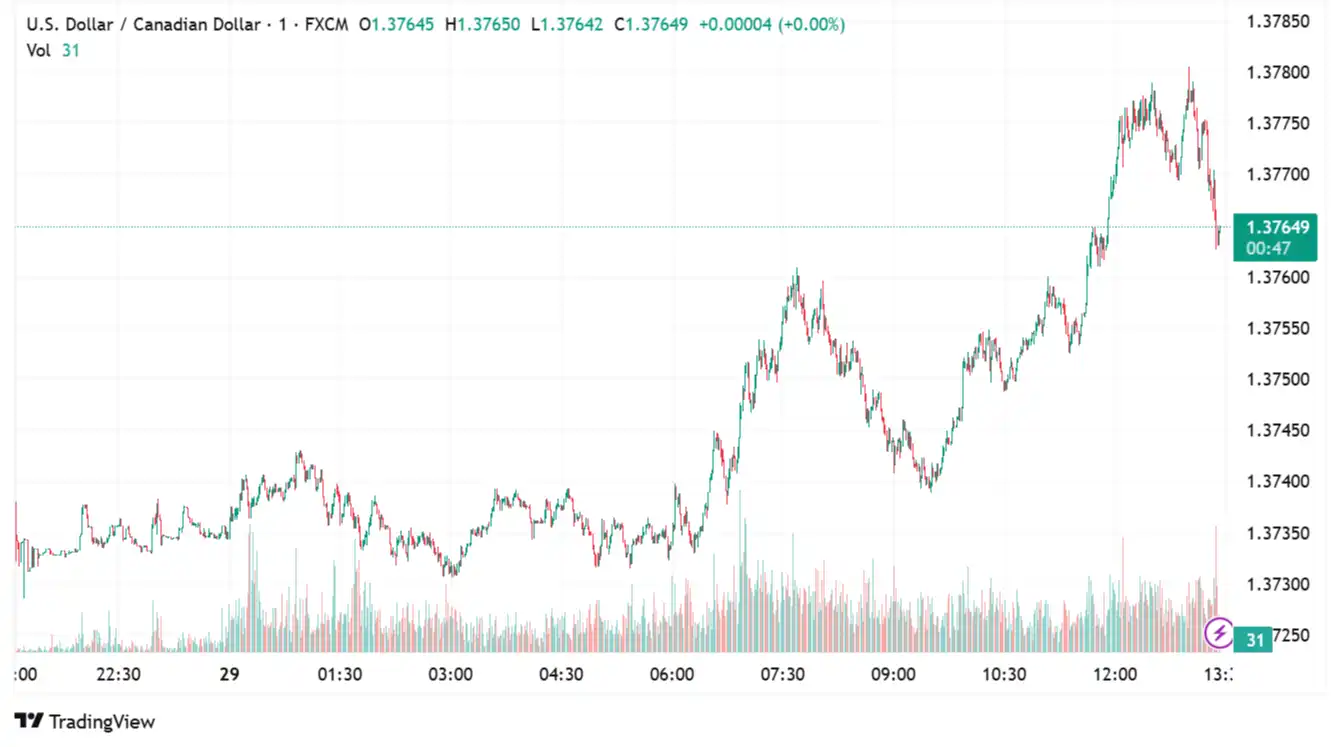
AUD/USD Subdued Ahead of US-China Discussions
AUD/USD slumps to near 0.6512, as the US dollar strengthens following the trade deal between the United States (US) and the European Union (EU). The US and EU reached a framework trade agreement on Sunday that sets 15% tariffs on most European goods, taking effect on August 1. Traders are watching the progress of US-China trade negotiations. The talks are set to restart on Tuesday after high-level officials from both countries held over five hours of discussions in Stockholm on Monday. The aim of this meeting is to resolve ongoing disputes and extend the trade truce by three more months. US Treasury Secretary Scott Bessent met with China's Vice Premier He Lifeng at Sweden's Rosenbad government offices. This meeting comes ahead of the August 12 deadline to finalise a long-term tariff agreement with the Trump administration, building on the preliminary agreements from May and June that helped reduce tensions. US Commerce Secretary Howard Lutnick confirmed a firm stance on trade, stating there will be "no extensions, no more grace periods" for the upcoming August 1 tariff deadline. "The rules are clear, tariffs will begin on August 1 unless a deal is reached. End of story." Meanwhile, the Reserve Bank of Australia (RBA) is expected to scrutinise June's labour force data and second-quarter inflation figures closely before deciding on a potential interest rate cut.
On the US dollar front, investors await the Q2 US Gross Domestic Product (GDP) and labour market data for fresh insights on the greenback. The US GDP is projected to rebound to 2.4% annually after a -0.5% decline in Q1. Meanwhile, the GDP Price Index is expected to decrease to 2.4% from 3.8%. The Fed faces increased pressure from the Trump administration to cut interest rates quickly and early; President Trump has called for a three-percentage-point reduction in the fed funds rate. Despite White House protests, the Fed is widely anticipated to hold rates steady this week, with a potential quarter-point cut in September. Headline inflation experienced volatility throughout the second quarter, largely attributed to the Trump administration's erratic trade and tariff policies. In June, the PCE inflation index is expected to rise again to 0.3% MoM from 0.2%. Trump also commented on the Federal Reserve, saying, "I believe it must cut rates this week," but he also mentioned that the economy is doing well even without rate cuts. His comments are expected to increase speculation about potential political influence before the Fed's decision on Wednesday.
US-China trade talks and the US economic docket, including Conference Board Consumer Confidence, JOLTS Job Openings report, ADP Employment Change, Q2 US Gross Domestic Product (GDP), Personal Consumption Expenditures (PCE) inflation, and weekly Initial Jobless Claims, along with the Fed's monetary policy decision, will influence the AUD/USD exchange rate.
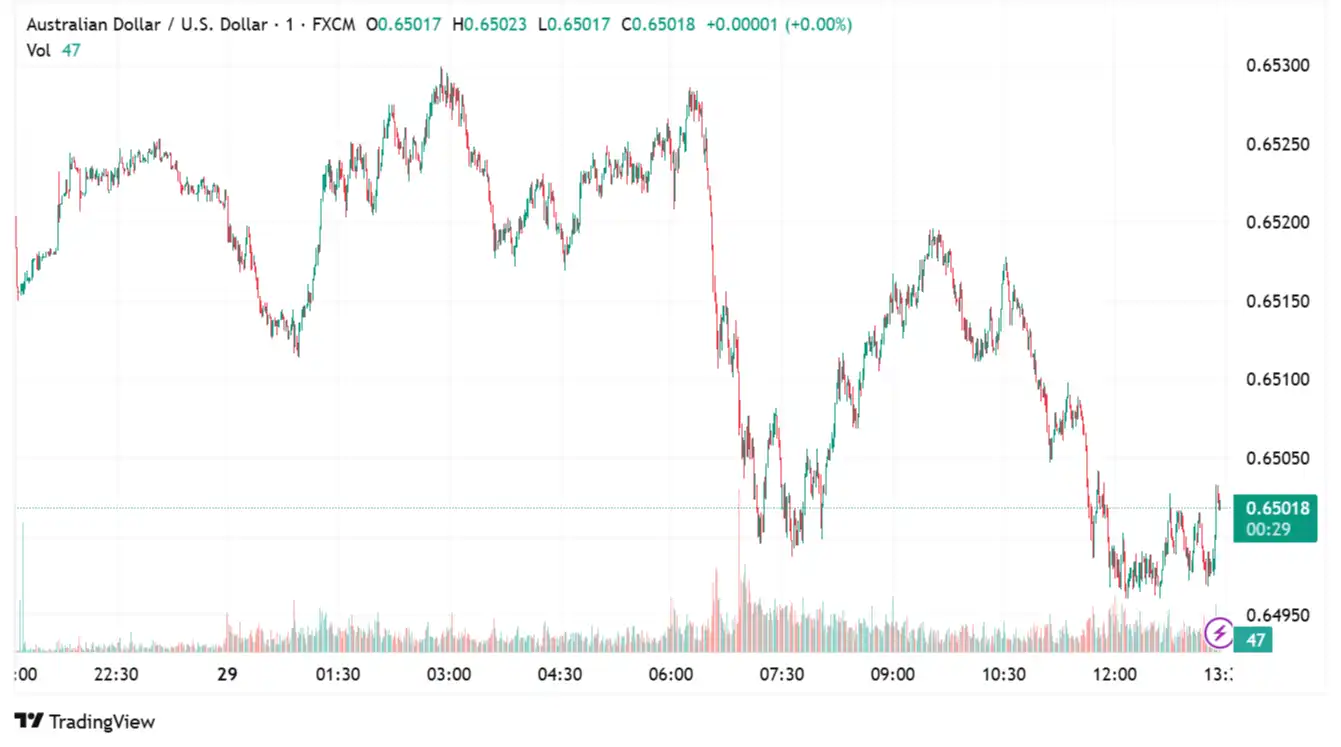
EUR/USD Tumbles Following US-EU Trade Deal
EUR/USD hovered around 1.1568 after a new US-EU trade framework was finalised following a brief meeting between US President Donald Trump and European Commission President Ursula von der Leyen on Sunday. The agreement stipulates that the US will apply a 15% tariff on most EU imports, including cars, semiconductors, and pharmaceuticals, which is notably lower than the previous 30% threat. This baseline rate is complemented by "zero-for-zero" tariff exemptions for strategic sectors such as aircraft and parts, chemicals, semiconductor manufacturing equipment, generic drugs, agricultural products, and key raw materials. In return, the EU commits to purchasing $250 billion worth of US liquefied natural gas (LNG) annually, amounting to about $750 billion over three years. The deal also includes a $600 billion EU investment in the US, focusing on sectors like clean energy, defence, and manufacturing. Although existing steel and aluminium tariffs remain at 50%, officials hinted that a quota-based system might replace them in future negotiations.
Meanwhile, German Chancellor Friedrich Merz welcomed the deal, saying it "successfully preserved our core interests," although he expressed a desire for more relief in transatlantic trade. French and Hungarian leaders, however, criticised the agreement as too one-sided. A Belgian official noted, "Trump ate von der Leyen for breakfast," sparking debate across European markets. The European Commission now needs to formally present the framework to both EU member states and the European Parliament, where approval from both is necessary through the ordinary legislative process. On Monday, ECB policymaker Peter Kazimir stated there is "no significant change" prompting action in September, emphasising that only "clear signs of deterioration in the labour market" would influence a move. Kazimir also mentioned that while the US-EU trade deal has lessened uncertainty, its effects on inflation are still uncertain. France condemned the decision on Monday, calling it a "dark day" for Europe. They argued that the bloc had surrendered to US President Donald Trump by agreeing to an unbalanced deal that included a headline 15% tariff on EU goods.
On the other hand, investors await the Federal Reserve's (Fed) monetary policy announcement and Fed Chair Jerome Powell's remarks at the post-meeting press conference for fresh insights on the central bank's policy outlook. Meanwhile, US President Donald Trump set a new deadline of 10 to 12 days for Russia to advance toward ending the war in Ukraine. He warned of harsh sanctions if Russia did not act and stated that his administration would impose 100% secondary tariffs on countries that continue to buy Russian exports. Trump also announced via social media on Monday that trade negotiations with Cambodia and Thailand would resume after both nations ended a five-day conflict along their disputed border. "By ending this war, we have saved thousands of lives," Trump said. "I have instructed my Trade Team to restart negotiations on trade." On the data front, the Job Openings and Labour Turnover Survey (JOLTS) is expected to show that openings decreased from 7.769 million to 7.55 million. Additionally, the Gross Domestic Product (GDP) for Q2 is projected to rise from -0.5% to 2.4% on a quarter-on-quarter basis. The Fed's Core Personal Consumption Expenditures (PCE) Price Index is forecast to remain steady at 2.7% year-on-year.
Besides the Fed's interest rate decision, US labour market data, eurozone retail sales, and HCOB Manufacturing PMI figures will also influence the EUR/USD exchange rate.
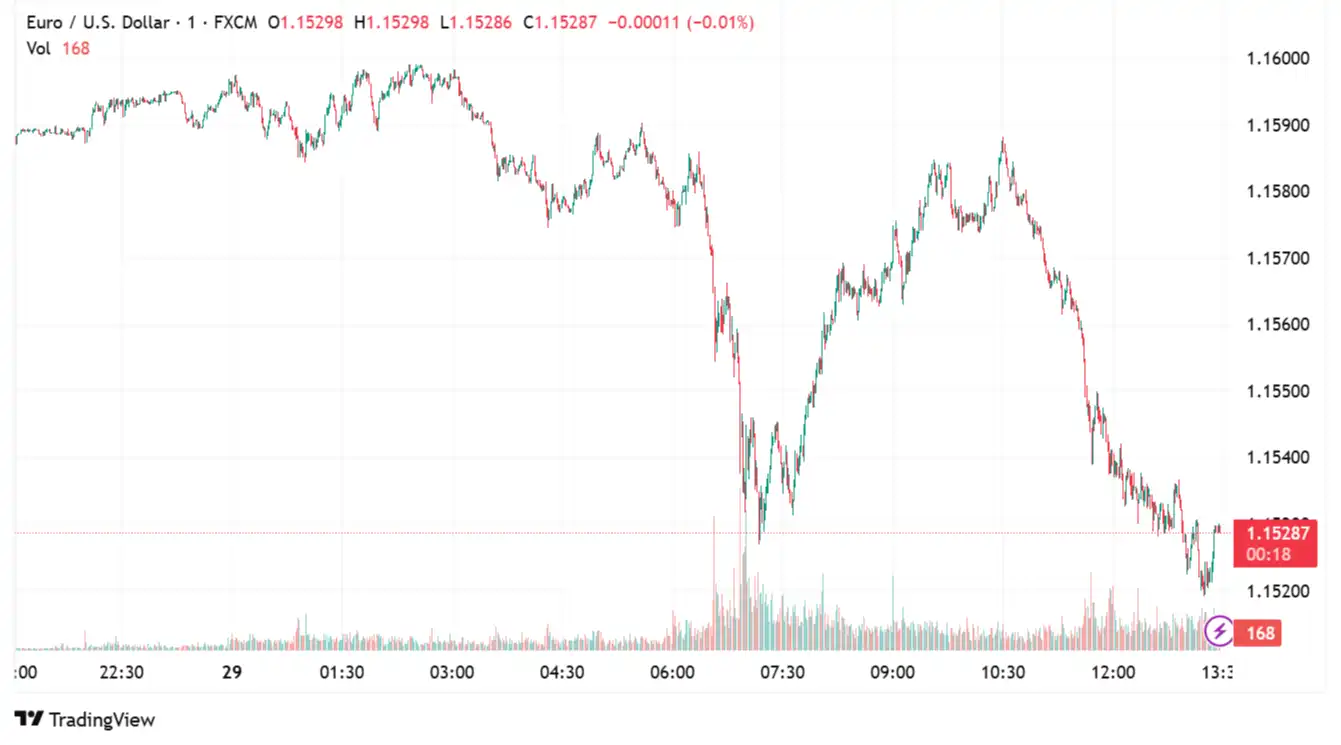
Stay Ahead in the Currency Game
Whether you're a daily FX trader or handle international transactions regularly, our 'Currency Pulse' newsletter delivers the news you need to make more informed decisions. Receive concise updates and in-depth insights directly in your LinkedIn feed.
Subscribe to 'Currency Pulse' now and never miss a beat in the currency markets!
Ready to act on today’s insights? Get a free quote or give us a call on: +44 (0)20 7740 0000 to connect with a dedicated portfolio manager for tailored support.
Important Disclaimer: This blog is for informational purposes only and should not be considered financial advice. Currency Solutions does not take into account the investment objectives, financial situation, or specific needs of any individual readers. We do not endorse or recommend any specific financial strategies, products, or services mentioned in this content. All information is provided “as is” without any representations or warranties, express or implied, regarding its accuracy, completeness, or timeliness.



